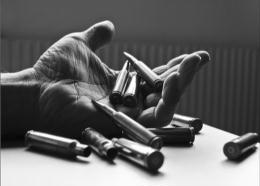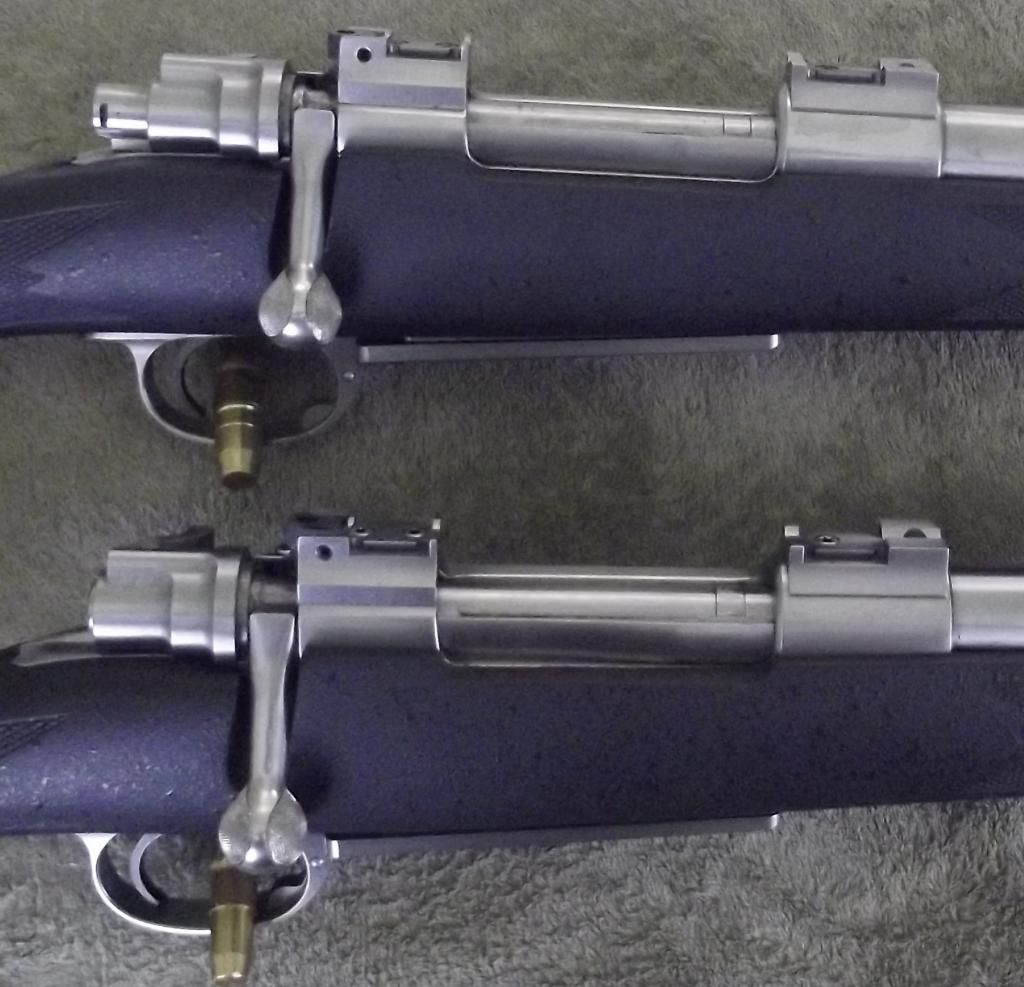

 The Accurate Reloading Forums
The Accurate Reloading Forums  THE ACCURATE RELOADING.COM FORUMS
THE ACCURATE RELOADING.COM FORUMS  Rifles
Rifles  Small Calibers
Small Calibers  Barrel Twist Rates - Faster for Barnes?
Barrel Twist Rates - Faster for Barnes?Go  | New  | Find  | Notify  | Tools  | Reply  |  |
| One of Us |
I've been looking at building a couple of new rifles. As I've been looking a barrel twist rates and formulas, I started to notice some issues between "standard" and "calculated" twists. Using the 25 caliber as an example (115gr at 2900 fps), standard twist rates in most rifles are 1/10". When you run the basic calculations, it seems as though a 1/9" twist gives far better stability. Now, when you build the specific gravity of lead/copper bullets and all copper bullets (Barnes) into the calculation, the calculated twist rate increase to 1/8.5" for all copper bullets. If this is true, than one should increase the twist rate to account for the possibility of shooting an all copper bullet. The downside is that as you increase the twist rate, the RPMs increase dramatically and could lead to bullet failure. Thoughts? Sneak close, aim small, hit hard! ** NRA Lifetime Member ** | ||
|
| One of Us |
I don't believe you'll see any bullets damage with solid copper bullets and highly doubt you will with the conventional jacket and lead core. Your 115 grain bullet at 2900 fps is doing 261,00 rpm. High but not enough to tear the bullet apart. | |||
|
| One of Us |
If by basic calculations you mean the Greenhill formula, remember that that dates to 1879, was designed for lead bullets, and uses the overall length of the bullet without regard for nose shape. So while it's still correct, it isn't as useful for spitzer-shaped monometal bullets of copper. If you want to know minimum twist rates needed for Barnes bullets, check their website. They identify the bullets that need faster than common twists. Bullet failure due to a high twist rate comes from the centrifugal force of the RPMs tearing the bullet apart. It's especially a problem with bullets like the Sierra Blitz and the Hornady SPSX fired at high velocity in a very fast twist barrel, but can happen to any bullets, and is more likely to happen to lighter weight bullets fired in faster twist barrels at higher velocities. The jacket can't contain the lead, which is spinning so fast it wants to splatter everywhere, and so the bullet comes apart rather violently. This failure shouldn't happen with a bullet like a Barnes or ETip or GMX because they are homogenous and made of a much, harder material than lead. LWD | |||
|
| One of Us |
Twist rate and bullets Rusty We Band of Brothers! DRSS, NRA & SCI Life Member "I am rejoiced at my fate. Do not be uneasy about me, for I am with my friends." ----- David Crockett in his last letter (to his children), January 9th, 1836 "I will never forsake Texas and her cause. I am her son." ----- Jose Antonio Navarro, from Mexican Prison in 1841 "for I have sworn upon the altar of god eternal hostility against every form of tyranny over the mind of man." Thomas Jefferson Declaration of Arbroath April 6, 1320-“. . .It is not for glory, nor riches, nor honours that we are fighting, but for freedom - for that alone, which no honest man gives up but with life itself.” | |||
|
| One of Us |
I have pushed 55 grain cup and core bullets to 4250 ft/sec out of a 243Win w/ 1/10" twist and didn't have any bullet failure. If I were to err concerning twist rate I would rather err with it too fast than too slow. Dennis Life member NRA | |||
|
One of Us |
Jim "Life's hard; it's harder if you're stupid" John Wayne | |||
|
| one of us |
Shilen's suggestions are useful but not necessarily relevant to many of today's longer monometal bullets. With all the pressure on manufacturers to phase out lead cored bullets, I have been advising customers to go with a faster twist than they think they need in many cases. The Berger 130 gr 6.5mm bullets requires an 8" twist. Most barrel makers will say that only bulets of 140 gr or more require an 8" twist.  Aut vincere aut mori | |||
|
| One of Us |
It looks like my assumptions were correct that Barnes bullets will require a bit faster twist than originally shown with normal calculations. I've been using the Miller formulas for the most part and Greenhill as only a reference. Thanks for all the feedback. Sneak close, aim small, hit hard! ** NRA Lifetime Member ** | |||
|
| One of Us |
Smokin Joe--261,000 rpm at 2900fps. I doubt that you have heard about it, unless you have read some journals of a rocket scientist, but there is a theory of an rpm threshold. Have you ever heard of such? | |||
|
one of us |
In a nut shell yes. Monometals are longer for the weight, and will stabilize better with more twist. The only time I found bullets coming apart in flight was a long time ago with blitz and SX bullets. I was looking for varmint bullets for collecting pelts that wouldn't tear up fur. I found these both came apart in flight with a 1:10 twist mini14 and out of a 1:12 twist .22-250. | |||
|
| One of Us |
LWD, thank you for siding with the Laws of Physics instead of smokey boy. I was able to blow up every commercially made 22 caliber bullet with a 1:9" twist 22-416 Ackley Improved except one. The 60gr Nosler solid base held together at 5400+fps. People like Dan Lilja and Ed Shilen have suggested taking the Greenhill results and going 1" faster on the twist with conventional cup and core bullets. I think I would make it an inch quicker with the mono-metal projectiles. | |||
|
| One of Us |
Rich, holy cow!, that's 432,000 RPM!!! But the whole notion of a 22-416 Ackley Improved is pretty scary too. That does say a lot about the 60 grain Solid Base though. Were you just trying to blow up bullets? LWD | |||
|
| One of Us |
Smokey boy is with the law of physics IdahoShitshooter. You smoked too much weed in Nam boy. What kind of fool builds a 22-416 to just blow bullets up. Just like engines, flywheels, a whole multitude of other mechanical devices that spin there is a limit to how fast you can spin them. Thus thus the reason for scatter shields on car engine flywheels in racing for an example. The poster's question wasn't in the realms of an idiot like you. You have a hard time sticking to the questions though don't you? | |||
|
| One of Us |
The whole notion of a 416 Rigby necked down to 22 caliber escapes me? Is this the famous or close to the famous eargosplittenloudenboomer? Sarcasm aside. I have blown up Sierra Blitz out of my 22-250. They make a neat vapor trail that just ends out about 60 yards. | |||
|
| Powered by Social Strata |
| Please Wait. Your request is being processed... |
|
 The Accurate Reloading Forums
The Accurate Reloading Forums  THE ACCURATE RELOADING.COM FORUMS
THE ACCURATE RELOADING.COM FORUMS  Rifles
Rifles  Small Calibers
Small Calibers  Barrel Twist Rates - Faster for Barnes?
Barrel Twist Rates - Faster for Barnes?

Visit our on-line store for AR Memorabilia

